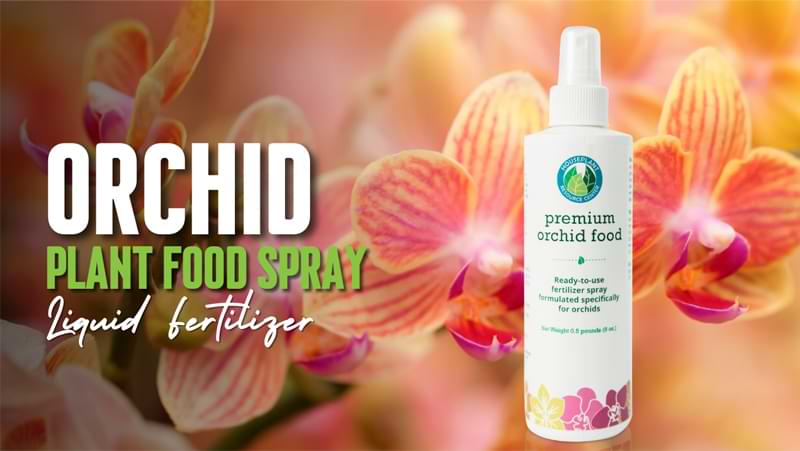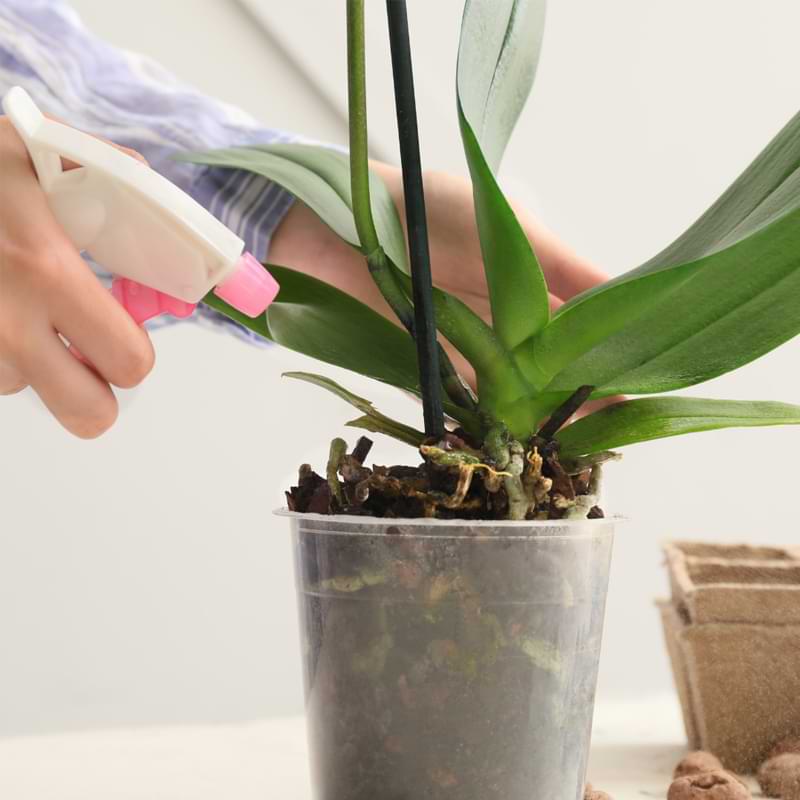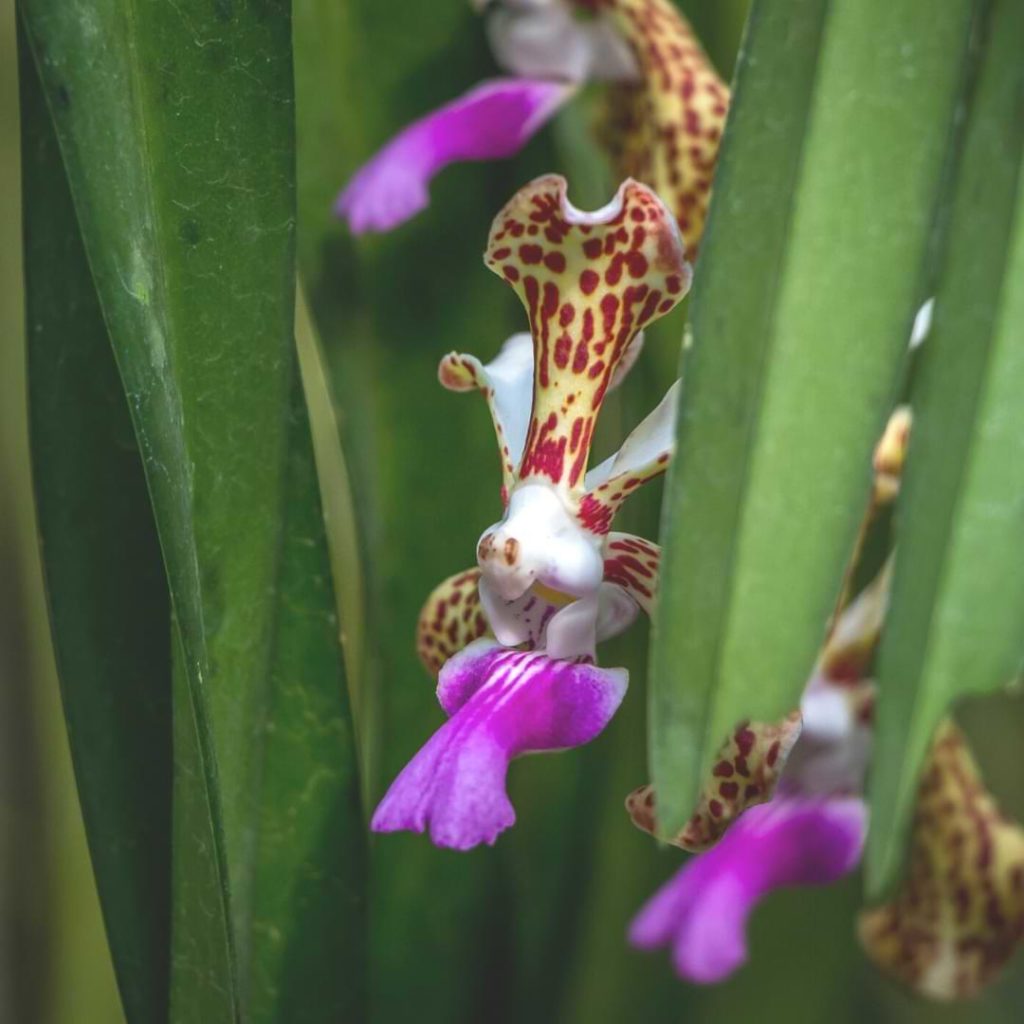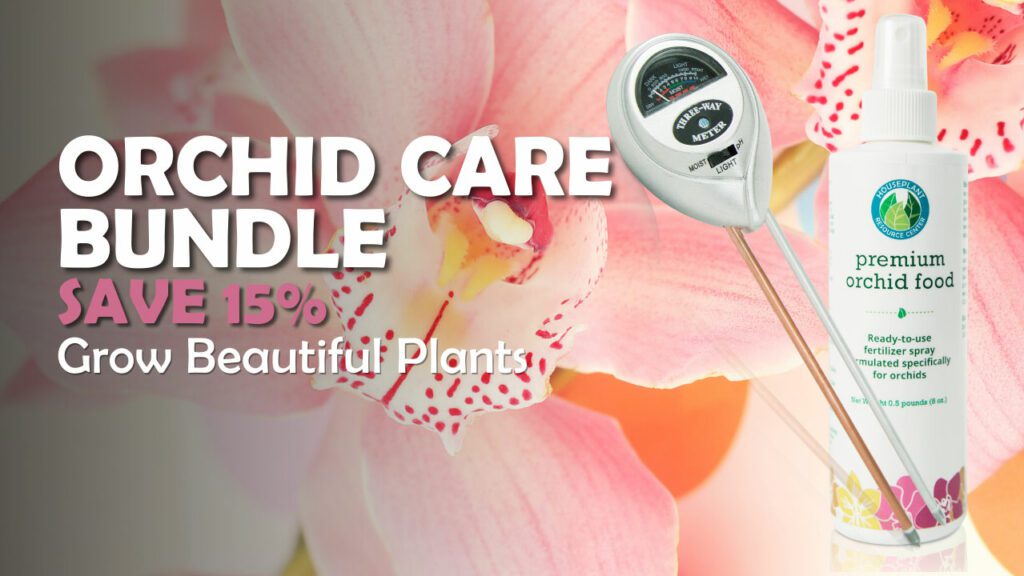Even avid houseplant owners will sometimes see white spots on their orchid’s leaves. There are many types of fungi and mold that may plague orchids, but the good news is that these types of spots can most likely be fixed and prevented in the future.
It’s beneficial to first figure out what kind of mold or fungus is affecting your plant. From there, you can figure out why your plant may have developed these white spots. This makes it easier to prevent any additional mold or fungi growth from happening in the future and help cure white spots on orchid leaves.
Why Does My Orchid Have White Spots on the Leaves?
There are many reasons that orchids can develop white spots. This type of issue is most likely due to a variety of fungal infections or mold growths. On top of that, there are many types of infections that can affect these plants.
Fungal infections can be due to poor air movement in the space around the plant, increased temperatures, poor lighting for a long period of time, poor sanitation, or even too much moisture on the leaves.
How Do You Treat White Spots on Orchid Leaves?
Many different treatments can reverse or prevent certain infections from further damaging the plant. For example, spraying the plant directly with a fungicide spray that contains copper or other chemicals may help the problem.
There are plenty of treatments available at your local nursery or plant sanctuary, but follow the label’s instructions to ensure that you’re using the proper amount of fungicide. Additionally, there might be a home remedy that works just as well.
What Does Orchid Fungus Look Like?
Depending on the type of fungus present, certain symptoms give clues as to what kind of fungus is causing harm to the plant.
For example, if the aerial portion of the plant is affected, it might be a fungus called anthracnose, an infection that causes leaf tips to brown. The affected area is usually sunken and sharply defined, although the remainder of the leaf is typically normal. If untreated, black or brown pustules may develop and become watery and raised, which often occur on the underside of older sepals and petals.
Another fungal infection is called cercospora, which might occur as yellow spots on the underside of the leaf. The spots may continue to enlarge in an irregular pattern or a more uniform circular pattern, and if the leaf becomes heavily infected, it might detach and fall from the plant prematurely.
Pseudocercospora is another type of fungi that primarily causes leaf spots and irregular blemishes, often purple or black in color. It’s also common for smaller black or brown spots to form around the larger spots; a mosaic pattern can occur on the upper surface of diseased leaves.
Guignardia produces tiny, dark-purple lesions on the upper or lower surface of the leaf, which run parallel to the veins and can turn into purple streaks or diamond-shaped spots. As spots continue to age, they may start to turn a tan color, and black sporing bodies may develop and feel like sandpaper.
Phyllosticta, another type of notable fungus, can start anywhere on the leaf or pseudobulb; lesions are typically small and yellow, and it’s possible for these areas to become slightly sunken. Spots can become more round or oval as they increase in size, and as this infection ages, they can turn tan or dark brown with a red or purple margin. Individual spots can appear as large as a quarter inch across.
Septoria, a common infection among orchids, is made up of tiny spots that appear on the leaf surface, which are often sunken and sometimes turn black or brown as they continue to enlarge. If a leaf becomes heavily infected, it might prematurely detach from the stem.
Treating Orchid Fungus
For all fungal infections listed above, immediate treatment is recommended to help reverse the damage and prevent it from worsening. Fungicides like Daconil, Cleary’s 3336, Heritage, or Garden Safe are great for clearing up these types of infections and preventing them in the future.
Depending on the type, the mixture may be sprayed directly on leaves, stems, or the base of the plant. Remember that the timing of fungicide application is more important than the spray type or pressure. If you have outdoor plants, be sure to spray the mixture before rain, so they have enough time to dry before the weather turns. If you overlook this step, your plant might become too wet, which might prove detrimental.

Preventing Orchid Fungus
The best way to prevent orchid fungus and infections is to ensure that your plant is healthy from day one when you first purchase it. From there, it’s fairly easy to keep up with preventative measures to ensure no infections are introduced.
To make sure that your plant is in tip-top shape from the start, we recommend a few things. First, only buy orchids from reliable growers. Research their background online or talk to them on the phone before deciding whether or not to purchase from them.
Next, wash your hands thoroughly before and after handling the plants. This ensures that no infections from other plants are transferred by touch. While handling sick plants, it’s best to wear disposable gloves to prevent spread to other plants. (It might be wise to wear gloves at all times to make sure no plants become diseased.)
Fighting Orchid Infections
There are tons of things you can do to fight and prevent infections from spreading. Here are just a few examples:
- Use only new potting mix when repotting new plants. Never reuse potting soil from old plants when introducing a new plant to your home.
- Provide your plant enough sunlight, proper air circulation, and mild temperatures and humidity. A good rule of thumb is to keep your orchid in temperatures between 65 and 80 degrees Fahrenheit.
- Spray fungicide on your plant even if no fungus is visibly present, which can prevent it from developing an infection in the future.
- Orchids should be completely dry before nightfall to prevent too much moisture and to allow your plant to breathe.
- When introducing a new plant to your home, keep it separate for up to 6 weeks to ensure it’s disease-free before locating it near existing plants.
Killing Orchid Bugs
Another common infestation besides fungus or mold is a specific type of bug: mealybugs are tiny insects that can wreak havoc on your plants and should be taken care of immediately upon discovery. (Read this post about the 5 common orchid pests and how to prevent them.)
Rubbing alcohol is a common go-to method of eradicating these tiny pests. Gently apply a 50/50 solution of water and 70% isopropyl alcohol with a cotton ball or a misting bottle. Be sure to repeat this process every week or two to ensure that the infestation is handled.

What Is the Best Fungicide for Orchids?
There are plenty of fungicide options available in stores and online. Copper products like Kocide, CuPRO, liquid copper, and Phyton are great for preventing and fighting many types of fungal infections. Hydrogen peroxide products like peroxide and ZeroTol also work in preventing some infections.
Some home remedies may also help prevent infections in certain plants. One homemade remedy includes baking soda: Wash the entire plant in a solution of 4 teaspoons of baking soda, 2 teaspoons of insecticidal soap, and 1 gallon of water. Repeat this treatment every two weeks as a preventative or when trying to kill a present infection.
Another home remedy that many people swear by is cinnamon. This delightful-smelling spice is a natural fungicide that is great for helping prevent infections in orchids. After trimming the plant’s stems, leaves, or roots, sprinkle some of the spice over affected areas. (Be sure these parts are moist so the cinnamon will stick.)
The Takeaway
There are many reasons why you might detect white spots on your orchid leaves, from fungal infections to mealybugs. Investigate and figure out the specific type of infection your orchid may be experiencing, then treat it with a common home remedy or a fungicide spray purchased from your local nursery.
Remember that the best way to fight fungal infections is to prevent them in the first place, so come up with a plan of action to ensure that your orchids stay happy and healthy.



